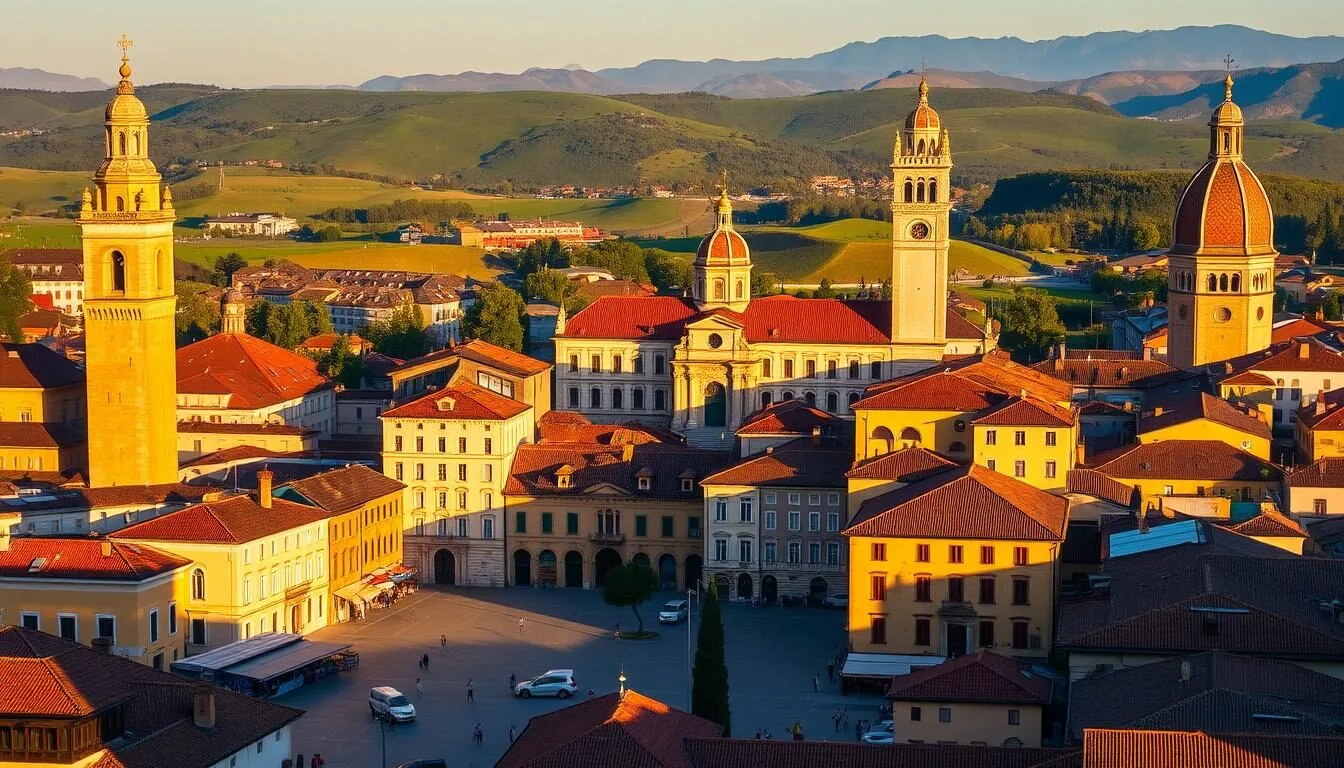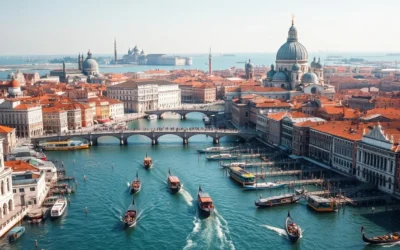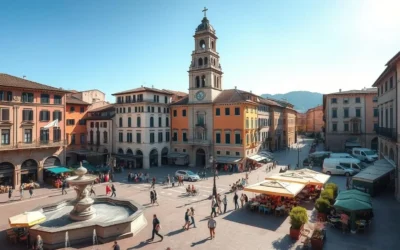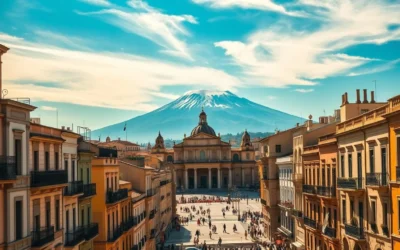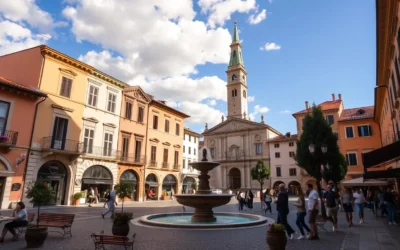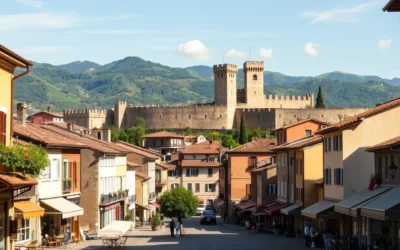✓ Accommodations✓ Flights✓ Rental Cars
Did you know that Padua is home to one of the oldest working clocks in the world? This charming city is a treasure trove of history, art, and culture, making it a perfect destination for travelers seeking an authentic Italian experience.
As you explore Padova, you’ll find stunning frescoes in the Scrovegni Chapel, vibrant markets, and beautiful architecture. With a rich history dating back over 3,000 years, Padova offers a unique blend of old and new, making it an ideal destination for history buffs and art lovers alike.
This comprehensive guide will walk you through the best things to experience in Padova, from world-famous art treasures to local culinary delights, ensuring that your visit is nothing short of extraordinary.
Discovering the Historic Charm of Padova
As you step into Padova, you’re immediately enveloped in a world of history that spans over 3,000 years. This city is a treasure trove of historical significance, from its ancient Roman foundations to its Renaissance glory days and beyond.
A City of Rich History and Cultural Significance
Padova is a city with a rich history that has shaped it into a hub of culture and education. Founded over 3,000 years ago, it has witnessed the rise and fall of empires, making it one of Italy’s most storied destinations. Some key aspects of Padova’s historical charm include:
- A unique blend of historical significance and modern vibrancy, making it an essential stop on any northern Italian itinerary.
- Preserved cultural heritage through stunning architecture, world-class art, and time-honored traditions.
- A youthful energy due to being home to one of Europe’s oldest universities, attracting students and scholars from around the world.
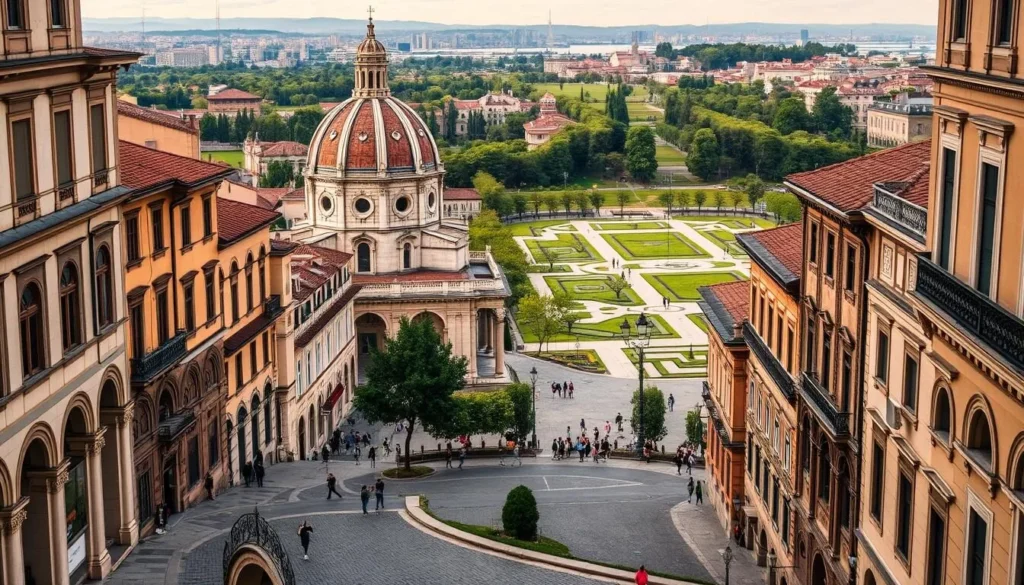
Why Padova Deserves a Spot on Your Italian Itinerary
When planning your trip to Italy, Padova should be a top consideration. This city offers an authentic glimpse into Italian life while still providing time-less attractions. As a guide to exploring Padova, consider its strategic location and intellectual heritage, which have shaped it into a place of innovation and artistic achievement.
Some compelling reasons to visit Padova include its ability to balance ancient roots with modern vibrancy, its rich cultural heritage, and its youthful energy. By visiting Padova, you’ll experience the best of Italian history, art, and culture in a unique and captivating way.
Marveling at Giotto’s Masterpiece: The Scrovegni Chapel
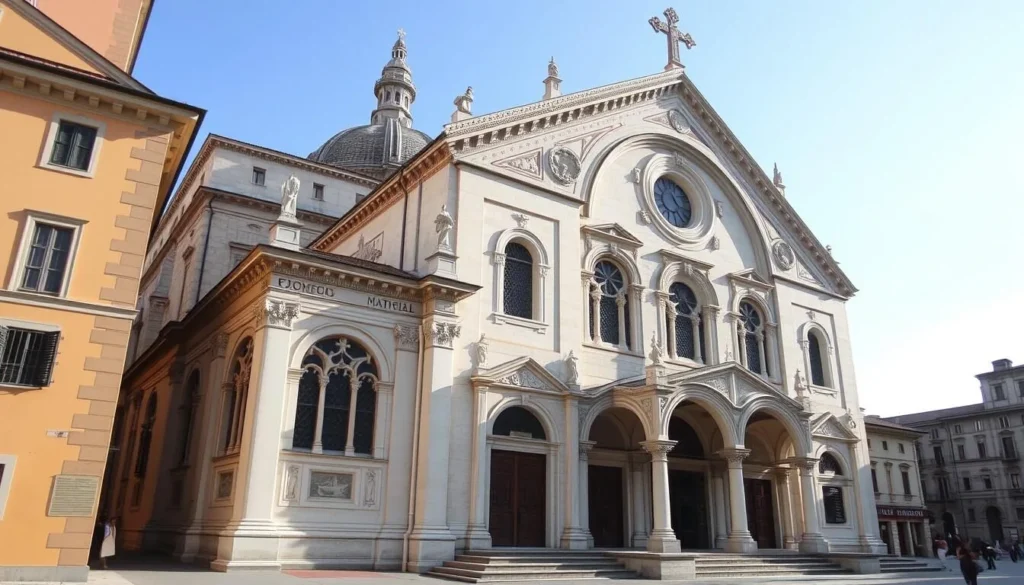
In the heart of Padova lies the Scrovegni Chapel, a UNESCO World Heritage site that houses some of the most influential frescoes in the history of art. This 14th-century gem is a cornerstone of Western art, renowned for its breathtaking frescoes by Giotto that revolutionized the art world.
The Revolutionary Frescoes That Changed Western Art
Giotto’s frescoes in the Scrovegni Chapel are a visual feast, depicting 38 scenes from the lives of Christ and the Virgin Mary with unprecedented emotional depth and realism. These frescoes broke away from medieval artistic traditions, marking the dawn of the Proto-Renaissance. The chapel’s ceiling, adorned with a stunning blue vault and gold eight-point stars, creates a heavenly atmosphere that complements the biblical narratives on the walls.
Giotto’s work here is considered the spark that ignited the Italian Renaissance, making this small chapel one of the most influential artistic spaces in Western history. The frescoes not only showcase Giotto’s artistic genius but also represent a pivotal moment in the evolution of Western art.
Essential Visitor Information and Booking Tips
Visiting the Scrovegni Chapel requires some planning. Due to its popularity and conservation needs, only 25 visitors are allowed per session, and each visit lasts 15 minutes. To ensure a smooth experience, it’s crucial to book your tickets in advance online. Before entering the chapel, you’ll spend time in a dehumidifying chamber watching a short film about the frescoes’ significance, which helps prepare you for the visual feast ahead.
To make the most of your visit, plan ahead and book your Scrovegni Chapel tickets early to avoid any last-minute hassles. This will not only save you time but also guarantee that you get to experience this incredible piece of art history.
Exploring the Basilica of Saint Anthony: A Pilgrimage Destination
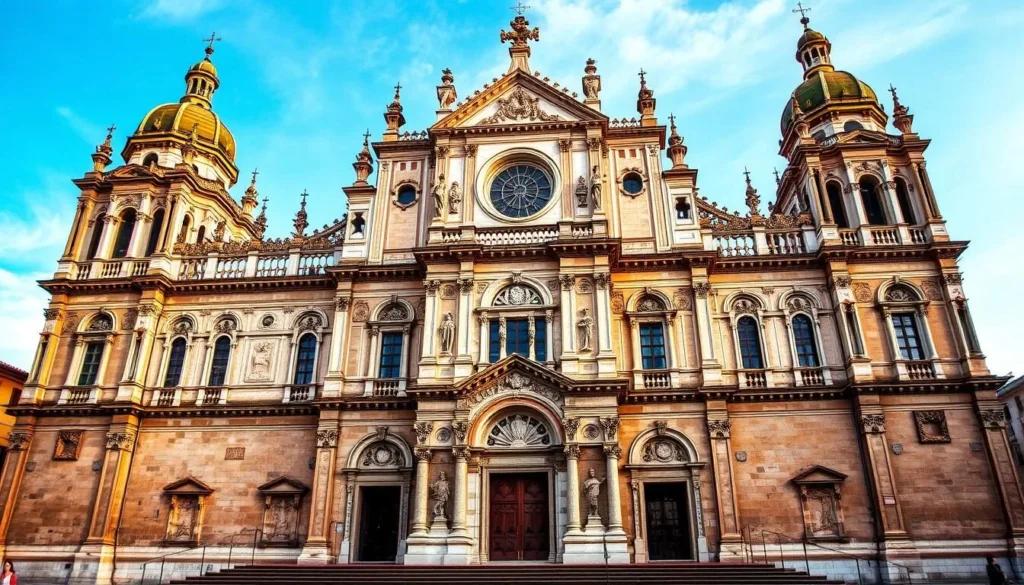
Padova’s Basilica of Saint Anthony is an architectural marvel and a deeply spiritual site that draws millions of visitors annually. This iconic building is a testament to centuries of faith and artistry, blending Romanesque, Gothic, and Byzantine styles in a masterpiece of architectural diversity.
Architectural Highlights and Religious Significance
The Basilica of Saint Anthony stands out with its impressive exterior, featuring domes reminiscent of Venice’s St. Mark’s Basilica. The basilica’s vaulted ceilings and intricate details inside are a feast for the eyes, showcasing stunning artworks that include bronze sculptures by Donatello, a Renaissance master.
The basilica’s spiritual significance attracts millions of visitors each year, offering a profound experience for both pilgrims and tourists. As one of the most visited pilgrimage sites, it holds a special place in the hearts of many, making it a must-visit destination when in Padova.
The Tomb of Saint Anthony and Donatello’s Sculptures
Inside the basilica, you’ll discover Donatello’s magnificent bronze sculptures, including his famous Madonna with Child and statues of six saints at the main altar. The tomb of Saint Anthony is a deeply spiritual place where you can witness pilgrims paying their respects to the beloved saint.
One of the most unusual sights is the display of Saint Anthony’s relics, including his preserved tongue and vocal cords, housed in ornate reliquaries. Despite its popularity, entrance to the basilica remains free, though it’s advisable to visit early morning or late afternoon to avoid the largest crowds.
Visiting the Basilica of Saint Anthony is a significant part of any trip to Padova, Italy. With its rich history, architectural beauty, and spiritual significance, it’s an experience that will leave a lasting impression on your visit to this historic city.
Strolling Through Prato della Valle: Italy’s Largest Square
One of the largest squares in Europe, Prato della Valle in Padova is a must-visit destination that combines history, culture, and relaxation. As you stroll through this expansive square, you’ll be struck by its unique design and historical significance.
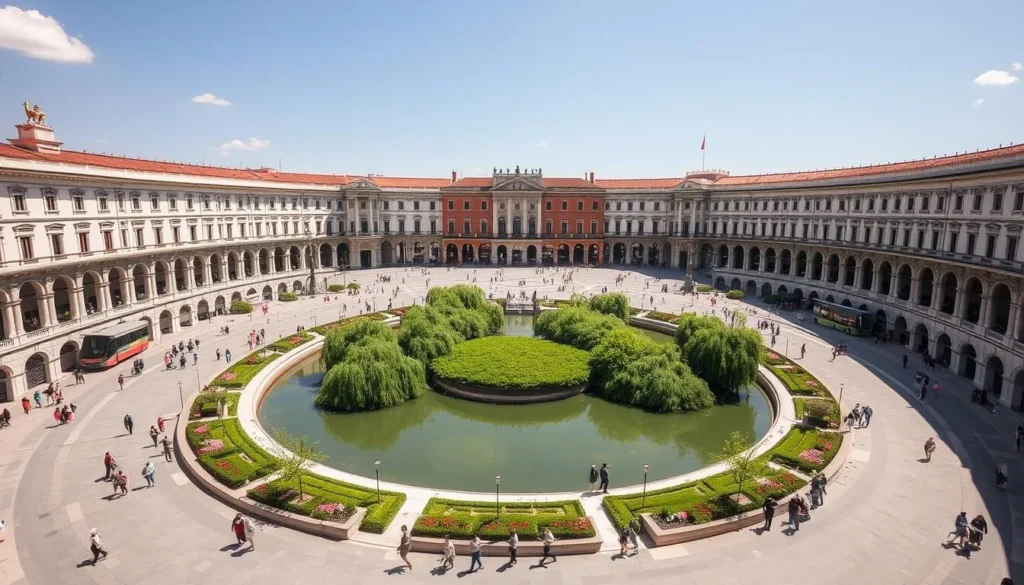
The History Behind the Monumental Square
The Prato della Valle square has a rich history dating back to its origins as a Roman theater and later as a horse racing venue. Over time, it has transformed into the beautiful public space you see today, hosting various events and festivals throughout the year.
Historically, the square has served as a hub for public events, from theatrical performances to modern festivals and markets, making it a lively gathering place for both locals and visitors.
The 78 Statues and Canal That Define the Space
The square is defined by its oval shape, surrounded by 78 statues and a central canal. These statues depict historical figures, adding a touch of grandeur to the space. Notable statues include tributes to Galileo Galilei, who taught at the University of Padova for 18 years, and the renowned poet Petrarch.
| Feature | Description |
|---|---|
| Size | 90,000 square meters |
| Statues | 78 historical figures |
| Design | Oval-shaped island with a central canal |
The combination of open space, flowing water, historical statues, and surrounding architecture makes Prato della Valle one of the most distinctive and photogenic squares in Italy.
Visiting the University of Padua: One of the World’s Oldest
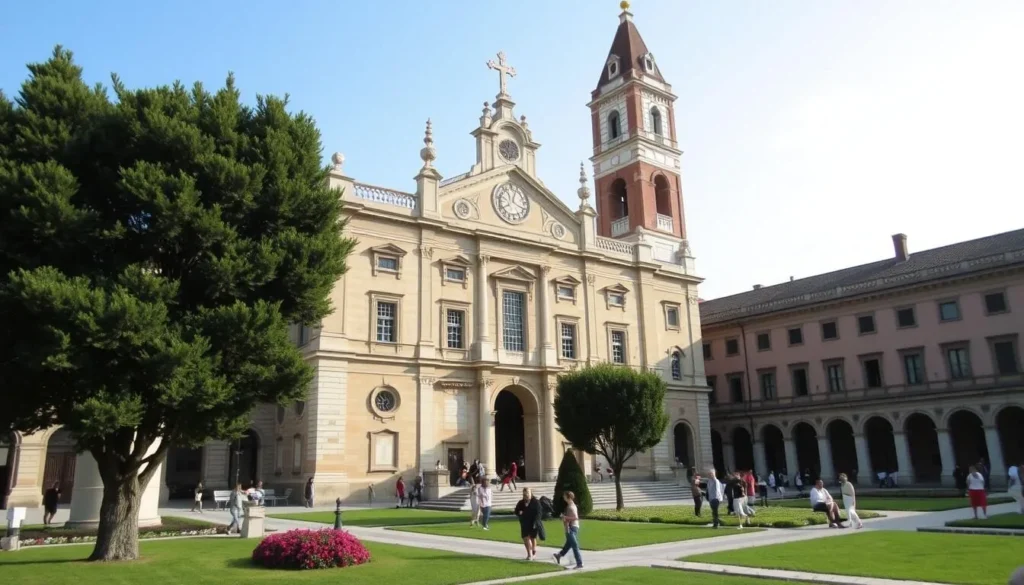
As you visit the University of Padua, you’ll be walking in the footsteps of intellectual giants who have shaped the course of history. Founded in 1222, this institution is one of the oldest in the world and has a rich history of academic excellence.
Palazzo Bo and Its Historic Significance
The University of Padua’s main building, Palazzo Bo, is a historic landmark that showcases the institution’s storied past. You’ll have the opportunity to explore this iconic building through guided tours, which reveal the university’s centuries-old traditions and innovations.
Palazzo Bo has been the hub of the university’s activities since the 14th century and has hosted many famous figures, including Galileo Galilei.
The Anatomical Theater and Galileo’s Legacy
The University of Padua is also home to the world’s first permanent anatomical theater, built in 1594, where students learned anatomy by witnessing dissections. This groundbreaking innovation revolutionized the field of medicine and cemented the university’s reputation as a center of scientific inquiry.
Galileo Galilei, a pioneer of modern science, taught at the University of Padua for 18 years, developing many of his groundbreaking theories. You can see his original podium and chair, preserved as a testament to his influential presence at the university.
Experiencing the UNESCO-Listed Botanical Garden
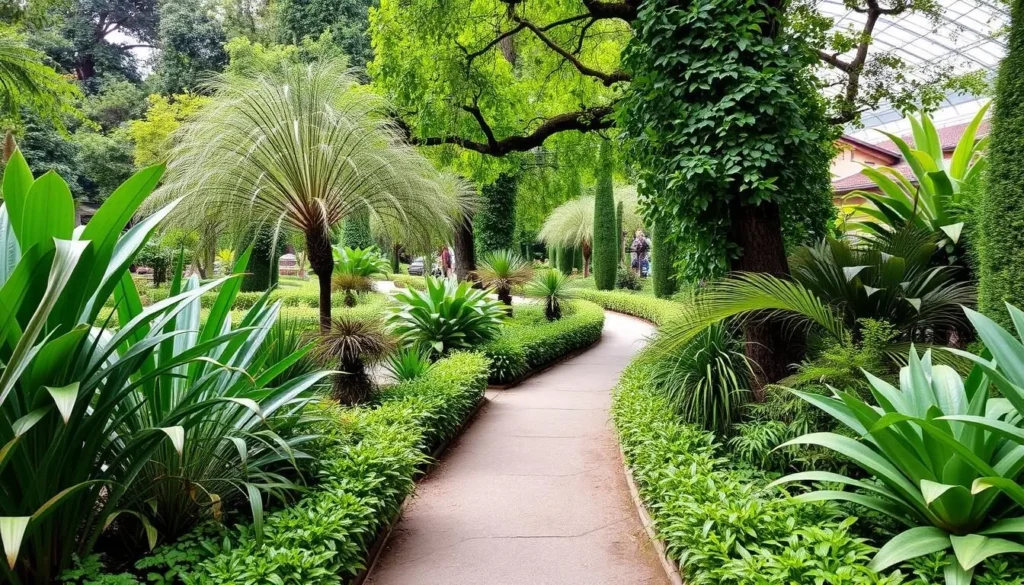
Step into the serene Botanical Garden, a living museum of nature that has been a cornerstone of scientific study since the Renaissance. This historic garden, founded in 1545, is recognized as a UNESCO World Heritage site and is the world’s oldest academic botanical garden still in its original location.
The World’s Oldest Academic Botanical Garden
The Botanical Garden was originally designed with a circular layout, embodying the Renaissance ideals of harmony and balance. Over time, it has expanded to include a diverse range of plant collections. You’ll explore the Historical Garden, where you can see the original Renaissance design and numerous ancient plant species, including a 400-year-old Mediterranean dwarf palm.
Rare Plants and the Modern Biodiversity Garden
In addition to its historical significance, the garden is home to the modern Biodiversity Garden, housed in a sleek glass structure. Here, you’ll discover a wide variety of rare and endangered plant species, including medicinal plants, orchids, carnivorous plants, and aquatic species, all carefully arranged in thoughtfully designed spaces. The garden continues its educational mission while preserving these species for future generations.
With over 7,000 botanical specimens and 3,500 different plant varieties, the Orto Botanico di Padova is a true haven for botany enthusiasts and those looking for a peaceful escape in the heart of the city.
Immersing in Local Life at Padova’s Historic Markets
As you wander through the historic heart of Padova, you’ll discover the vibrant pulse of the city’s daily life at its renowned markets. For over 800 years, these bustling hubs have been a cornerstone of the city’s culture, offering everything from fresh produce to handmade crafts.
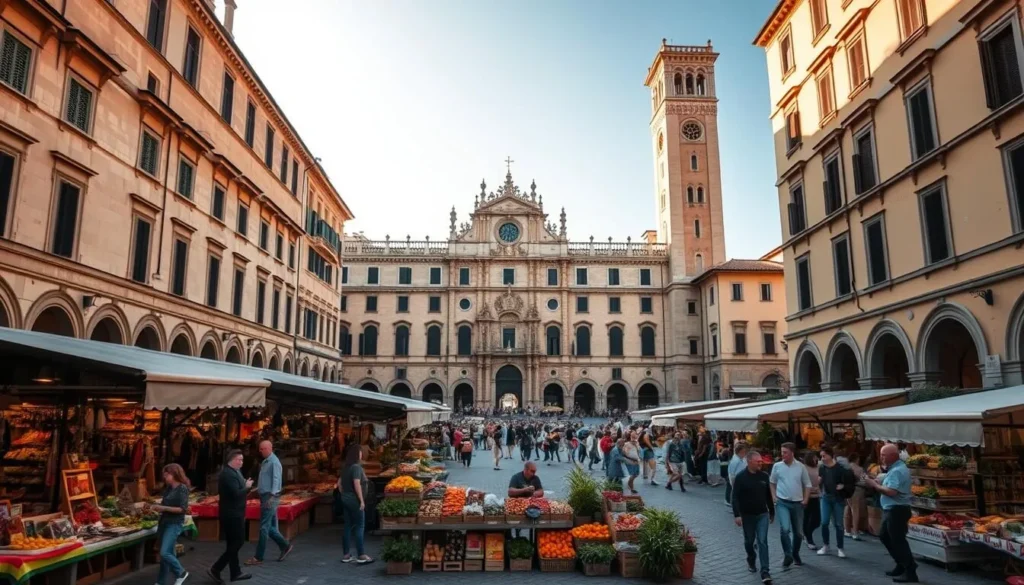
Piazza delle Erbe and Piazza della Frutta
The historic markets are primarily located in Piazza delle Erbe and Piazza della Frutta, which operate every weekday morning and all day on Saturdays. The vibrant atmosphere immerses you in authentic Italian daily life, with local vendors calling out their wares and the air filled with the enticing aromas of fresh produce, spices, and baked goods.
Shopping for Local Specialties and Souvenirs
You’ll find a wide variety of items, from seasonal fruits and vegetables to artisanal cheeses, cured meats, and handcrafted items perfect for souvenirs. The markets surround the Palazzo della Ragione, where you can also explore the indoor market in the basement featuring specialty meats, cheeses, and prepared foods. For the best experience, visit early in the morning when the produce is freshest and the locals are doing their daily shopping.
These historic markets serve as cultural meeting points where traditions are preserved and shared, giving you insight into the real Padova beyond the tourist attractions. By visiting Piazza delle Erbe and exploring the surrounding areas, you’ll experience the authentic spirit of this Italian city.
Admiring the Padua Cathedral and Baptistery
Located in a quiet square, the Padua Cathedral and its adjacent Baptistery are treasures that showcase Padova’s cultural heritage. You can explore these historic sites and experience the beauty of Padova’s religious architecture.
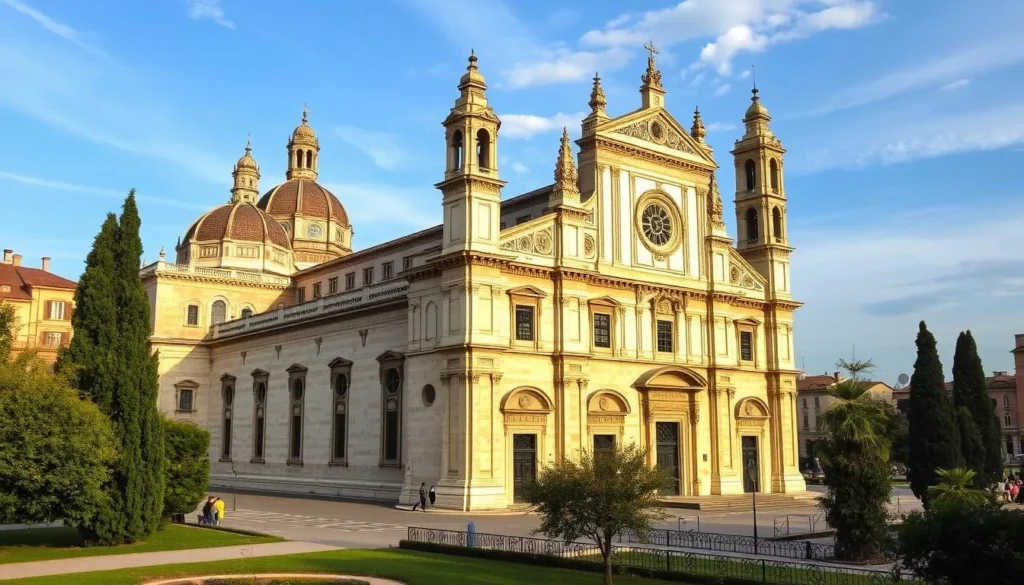
The Cathedral’s Modest Exterior and Rich Interior
The Padua Cathedral, or Duomo di Padova, presents a striking contrast between its modest, unfinished exterior and its richly decorated interior. You will discover beautiful artwork within, making it a worthwhile visit. The cathedral’s history dates back to the early Christian period, and its architecture reflects various styles over the centuries.
The Baptistery’s Stunning 14th-Century Frescoes
Next to the cathedral, the Baptistery is renowned for its 14th-century frescoes created by Giusto de Menabuoi. You can marvel at the vibrant colors and detailed biblical scenes that adorn the walls and ceiling, making it a unique cultural experience. The Baptistery is part of Padova’s UNESCO World Heritage designation, underscoring its significance.
Exploring Palazzo della Ragione: The Medieval Town Hall
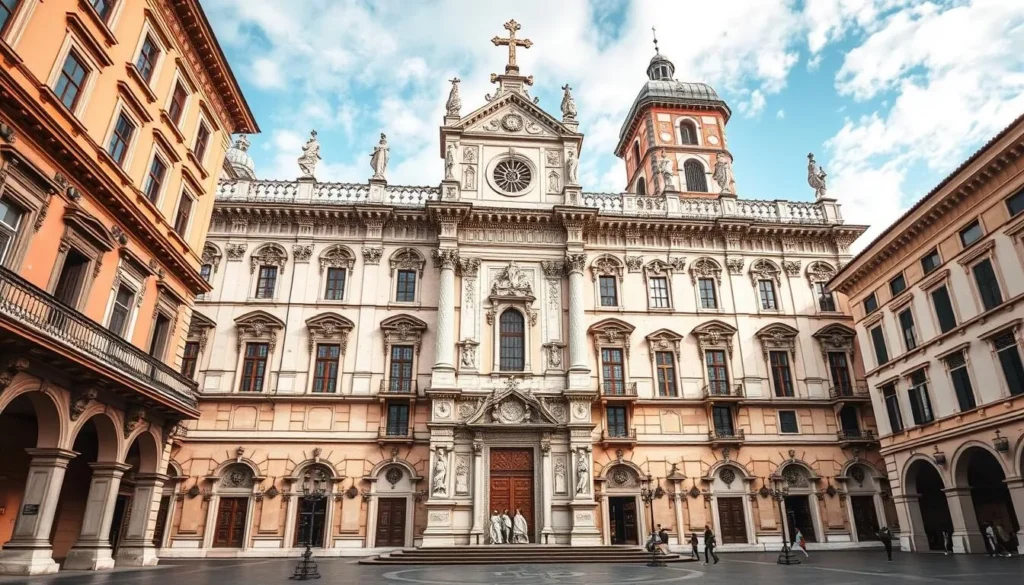
As you wander through the historic center of Padova, you’ll stumble upon the magnificent Palazzo della Ragione, located on the Piazza delle Erbe. This stunning 13th-century building served as Padova’s town hall and palace of justice for nearly five centuries.
The Great Hall and Its Remarkable Frescoes
The upper floor of the Palazzo della Ragione houses one of the largest medieval halls in Europe, with walls covered in hundreds of frescoes depicting astrological theories developed by Pietro d’Abano, a professor at the University of Padua. You’ll notice the impressive wooden horse on one side of the hall, modeled after Donatello’s famous Gattamelata statue.
The Market Below and Culinary Treasures
On the ground floor, you’ll find a covered market with shops and delis selling local specialties, where you can sample various regional cheeses, cured meats, and other culinary treasures. The palazzo connects Piazza delle Erbe and Piazza della Frutta, making it both an architectural marvel and a central hub of daily life in Padova.
Built in the 13th century, the Palazzo della Ragione is a testament to Padova’s rich history, and its grandeur is still awe-inspiring today. As you explore the hall and its surroundings, you’ll discover the charm of Padova’s medieval past.
Taking a Break at Historic Caffè Pedrocchi
Stepping into Caffè Pedrocchi is like taking a step back in time, immersing yourself in the city’s vibrant history and cultural significance. This iconic café, established in the 18th century, has been a cornerstone of Padova’s social and intellectual life.
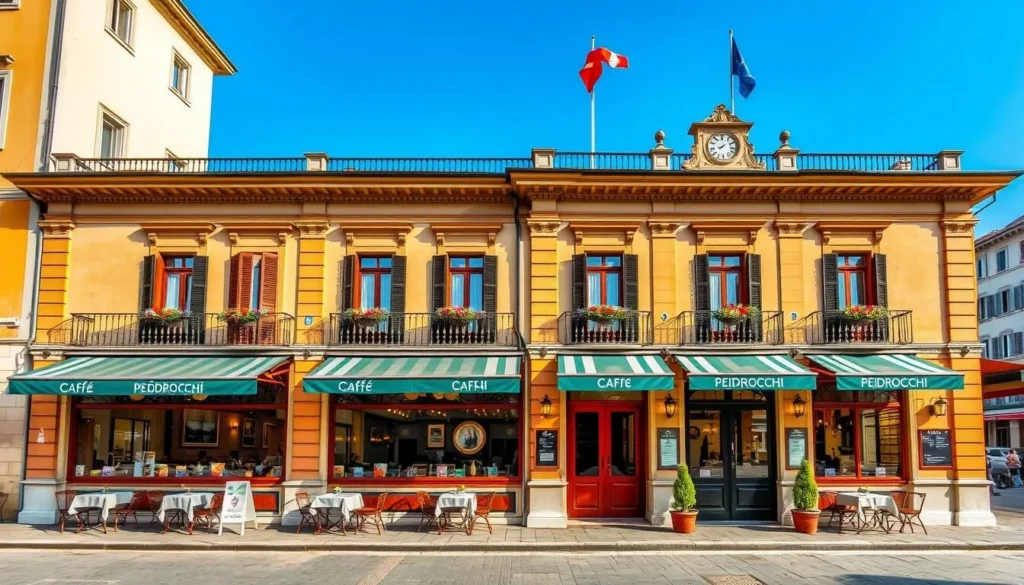
The Cultural Legacy of “The Café Without Doors”
Caffè Pedrocchi, famously known as “the café without doors,” operated 24/7 from 1831 until 1916. It was a hub for intellectuals, artists, and political activists, playing a significant role in Padova’s cultural and political landscape. The café’s eclectic architectural styles across its different rooms add to its unique charm, making it a fascinating experience for visitors.
The history of Caffè Pedrocchi is deeply intertwined with the city’s heritage, having hosted numerous influential figures over the centuries. You can still feel the historical significance as you sip on their signature coffee.
What to Order at Caffè Pedrocchi
When visiting Caffè Pedrocchi, you must try their signature drink, also called Caffè Pedrocchi – a delightful espresso made with 100% Arabica coffee, topped with mint-infused cream and a dusting of cocoa powder. This unique concoction is a testament to the café’s innovative spirit that has been present since the century it was established.
For a small fee, you can also visit the Museum of the Risorgimento on the upper floor, which provides insight into the café’s role in Italian unification movements and its history over time.
Marveling at the Astronomical Clock in Piazza dei Signori
As you wander through Padova, you’ll discover the historic Piazza dei Signori, home to an extraordinary 14th-century astronomical clock. This ancient timepiece is not only a marvel of medieval engineering but also a significant historical landmark that continues to fascinate visitors from around the world.
The 14th-Century Timepiece and Its Unique Features
The astronomical clock in Piazza dei Signori is one of the oldest clocks in the world still in working order, built in 1344. It features a unique 24-hour dial, a characteristic that sets it apart from most other clocks. Moreover, the clock tracks lunar phases and planetary movements, showcasing the advanced astronomical knowledge of its 14th-century creators.
Interestingly, the Libra zodiac sign is missing from the clock face, sparking numerous theories about its absence. This peculiarity adds to the clock’s mystique, making it a compelling subject of discussion among historians and visitors alike.
The Surrounding Square and Its Attractions
Piazza dei Signori transforms throughout the day, hosting a bustling market during daylight hours where you can find clothes, bags, accessories, and more. As night falls, the square becomes a vibrant gathering spot, with surrounding restaurants and cafes offering a delightful atmosphere to enjoy dinner or a cup of coffee.
| Time of Day | Piazza dei Signori’s Activity | Main Attractions |
|---|---|---|
| Day | Bustling Market | Shopping for clothes, bags, and accessories |
| Night | Vibrant Gathering Spot | Dining and coffee at surrounding restaurants and cafes |
![]()
Padova, Italy: Best Things to Do for Food Lovers
Padova, Italy, is a food lover’s paradise, offering a distinct culinary identity. As you explore this historic city, you’ll discover that the local cuisine is a highlight of your trip, with dishes that are both traditional and unique to the region.
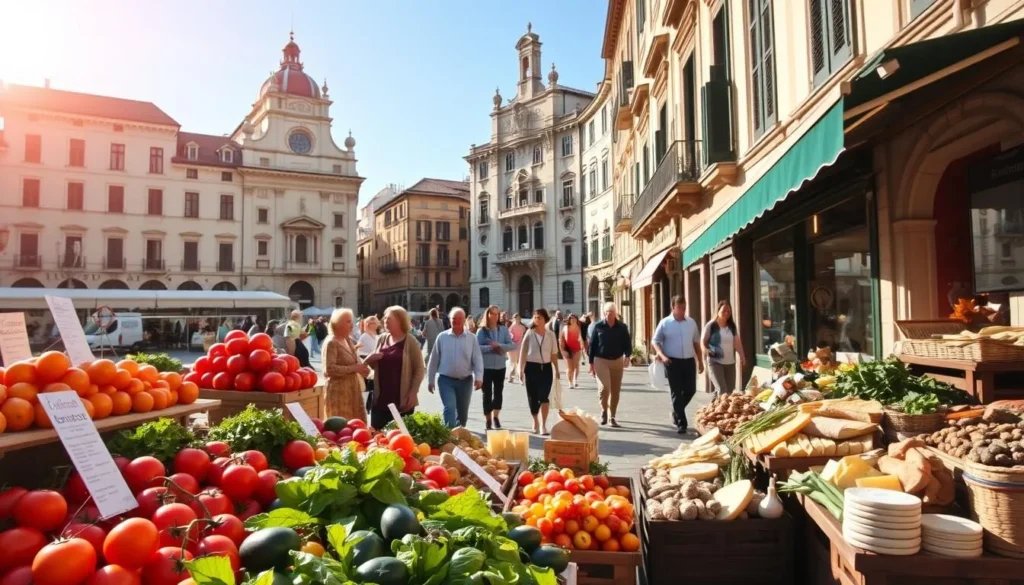
Local Specialties You Must Try
Padova’s culinary scene is characterized by hearty, locally-made dishes. You should try Bigoli with duck ragù, a signature pasta dish that combines thick, rough-textured pasta with rich duck sauce. For adventurous eaters, risotto coi rovinassi is a must-try, made with chicken livers, hearts, and gizzards, and typically finished with locally produced Grana Padano cheese. Don’t miss the opportunity to sample local specialties like Oca in onto Padovana, a traditional goose meat dish cooked with herbs and preserved in goose fat.
Top Restaurants and Food Markets
To experience the best of Padova’s cuisine, visit the markets around Palazzo della Ragione, where you can sample local cheeses, cured meats, and seasonal produce. Pair your meals with wines from the Veneto region, such as Prosecco or robust reds like Amarone and Valpolicella. For a unique breakfast experience, try Padova’s mint-infused coffee at Caffè Pedrocchi, paired with a sweet brioche au sucre.
By exploring Padova’s culinary scene, you’ll gain a deeper understanding of the city’s culture and traditions. Be sure to visit local eateries and markets to experience the authentic flavors of Padova.
Exploring the Jewish Heritage of Padova
You can discover a lesser-known side of Padova by delving into its Jewish heritage. The city’s Jewish community has a rich history that spans centuries, with significant contributions to the city’s cultural and academic landscape.
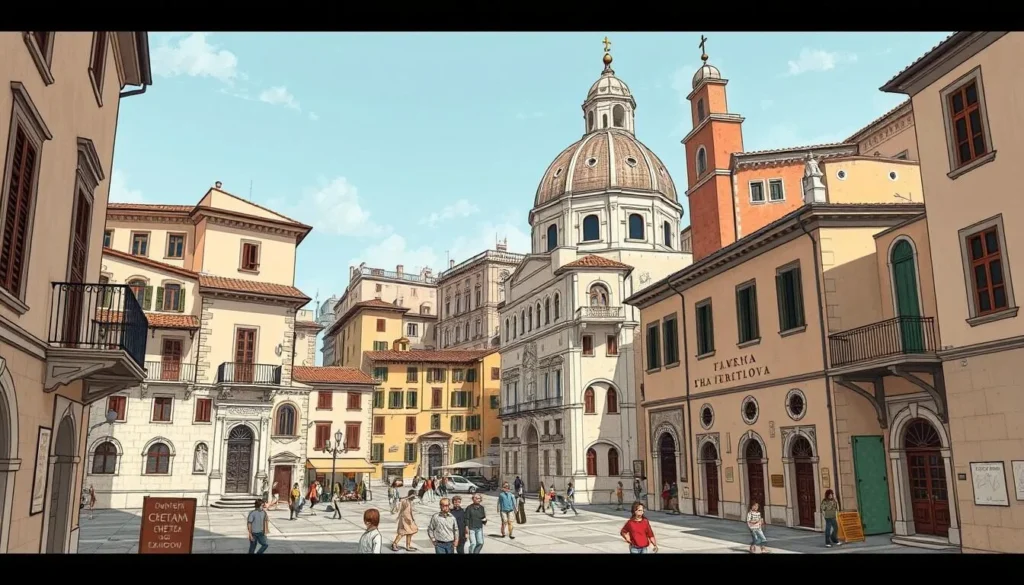
The Historic Jewish Quarter and Its Significance
The Jewish Quarter, located near Piazza delle Erbe, is a labyrinth of narrow, cobbled streets that have housed the Jewish community since the 13th century. Although it was officially established as a ghetto in 1601, the area has a long history of Jewish life and culture. Padova was a major center for Jewish learning, attracting students from across Europe to its renowned Rabbinical Academy.
The Jewish Museum and Synagogues
The Jewish Heritage Museum of Padua is a valuable resource for understanding the community’s history from its origins to the present day. Although it’s typically only open on Sundays or by guided tour on other days, it’s a must-visit for those interested in the city’s Jewish heritage. The area is also home to several historic synagogues that offer insight into the religious and cultural life of Padova’s Jewish community throughout the centuries.
Taking a Scenic Cruise Along the Brenta Canal
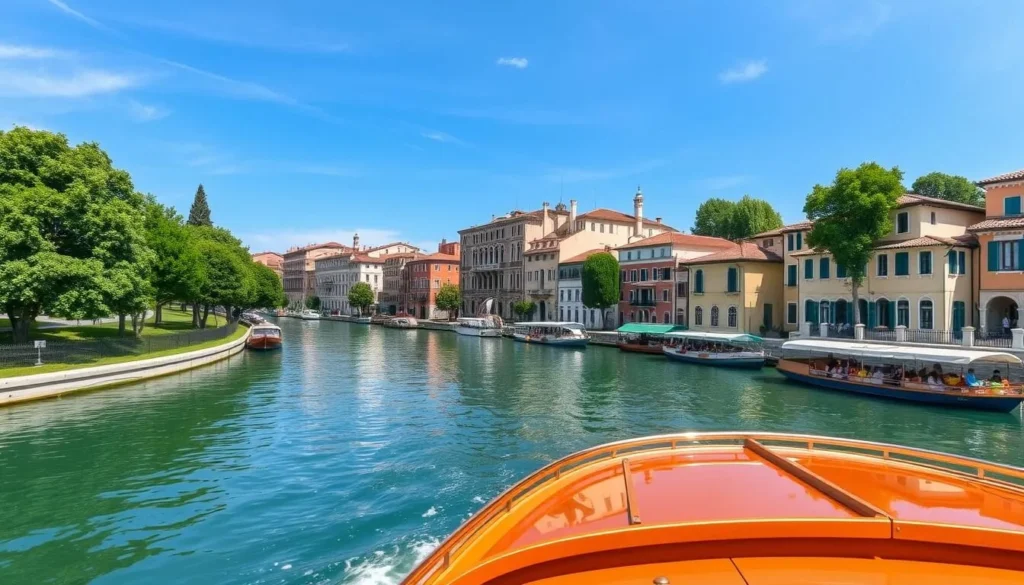
The Brenta Canal, a testament to the region’s rich history, offers a unique day trip experience from Padova. You’ll experience a unique perspective of the Veneto region by taking a scenic cruise along this historic waterway, which has connected Padova to Venice since medieval times.
The Historic Waterway Connecting Padova to Venice
The Brenta Canal was once the primary transportation route for Venetian nobility traveling between Padova and Venice. Today, it offers you a leisurely journey through centuries of history. The waterway has been a vital part of the region’s heritage, providing a glimpse into the past.
Venetian Villas Along the Route
Along the Brenta Canal, you’ll discover magnificent Venetian villas where wealthy families once spent their summers. Architectural masterpieces like Villa Pisani and Villa Foscari are just a few examples of the many impressive villas you’ll see. These cruises typically last a full day, allowing you to step off the boat and tour several of the most impressive villas, giving you insight into the opulent lifestyle of Venetian aristocrats.
The experience combines natural beauty, architectural splendor, and historical significance, making it one of the most memorable day trips you can take from Padova. If you’re short on time, shorter cruises are available, or you can simply enjoy photographing Padova’s urban canals that add charm to the cityscape.
Planning Your Visit to Padova
Getting to Padova is easy, and with a little planning, you can have a fantastic trip. Padova is a city that is easily accessible by train from major Italian cities like Venice, Verona, and Bologna, making it an ideal day trip or a longer visit.
Getting to and Around the City
Padova’s train station is well-connected, with fast trains arriving from nearby cities. For instance, a fast train from Venice takes about 28 minutes, while from Verona it’s about 44 minutes, and from Bologna, it’s roughly one hour. Once you arrive, the historic center is compact and walkable. However, if you prefer not to walk or have mobility issues, Padova also boasts an efficient bus and tram network.
- Fast train connections from Venice, Verona, and Bologna
- Compact historic center that’s walkable
- Efficient public transportation for those who need it
Best Time to Visit and Weather Considerations
The best time to visit Padova is during spring (April-May) and fall (September-October), when the weather is pleasant and humidity is relatively low. Summer can be hot and humid, while winters are cold. Planning your day around these weather conditions can enhance your experience.
- Spring and fall are ideal for pleasant weather
- Summer can be hot and humid
- Winters are cold, requiring warm clothing
The Padova Card: Is It Worth It?
Consider purchasing the Padova Card, available in 48 or 72-hour versions, which grants entry to major attractions like the Scrovegni Chapel. If you plan to visit multiple sites, it can offer significant savings, making your trip more economical and hassle-free.
- 48 or 72-hour card options available
- Includes entry to major attractions
- Potential savings for multi-site visitors
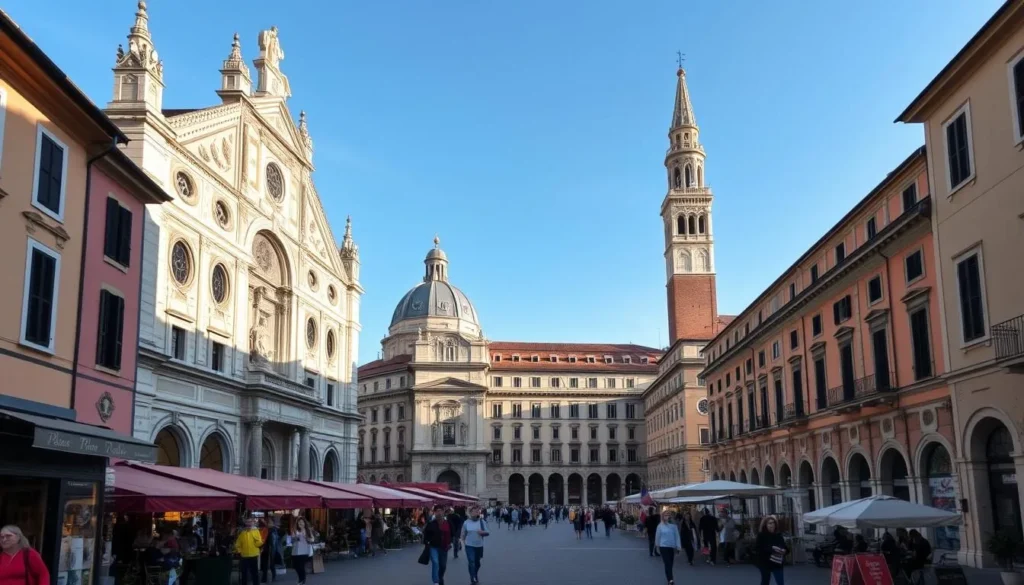
Conclusion: Why Padova Deserves More Than Just a Day Trip
As you conclude your journey through Padova, it’s clear that this city has much more to offer beyond a single day trip. You’ll find that Padova offers a rich tapestry of art, history, culture, and cuisine that a single day barely scratches the surface of.
Staying longer allows you to experience Padova at a more leisurely pace, discovering hidden corners and soaking in the authentic atmosphere of this university town. You’ll find that mornings and evenings in Padova have a completely different character, with markets bustling in the morning and piazzas coming alive with locals in the evening.
Whether you come for Giotto’s revolutionary frescoes, Donatello’s sculptures, or simply to enjoy the vibrant atmosphere, you’ll leave with a deeper appreciation for this often overlooked gem in northern Italy. Padova is a place that will make you want to return and explore further.
The above is subject to change.
Check back often to TRAVEL.COM for the latest travel tips and deals.
